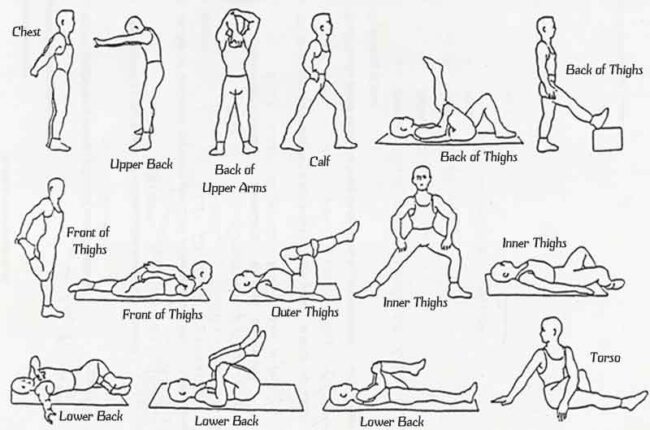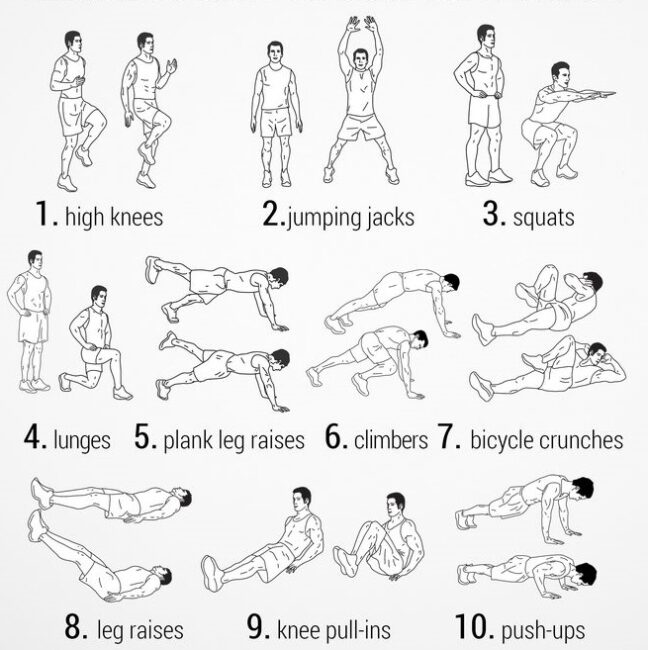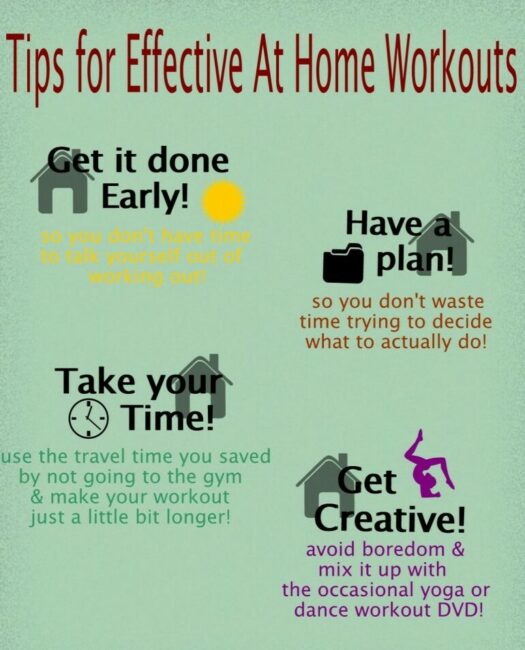Get Fit at Home: The Ultimate No-Gym Beginner’s Guide
Looking to start working out but not ready to spring for a pricey gym membership? You’re not alone. The good news is you don’t need fancy equipment or a high-end club to get in shape. Your living room, bedroom, or even backyard can work just as well—and you don’t have to wait for a treadmill to open up.
Why Home Workouts Work
Skipping the gym doesn’t mean skipping results. Working out at home can be even more effective because you’re cutting out the commute, the crowds, and all the extra excuses. With just a few affordable basics—think a yoga mat, a pair of dumbbells, and maybe some resistance bands—you can target every major muscle group without breaking the bank.
But here’s a secret: you don’t need any gear to get started. Your body weight is the ultimate workout tool, and it’s all you need to see real progress.
Bodyweight Moves that Work
Push-ups have been building strong arms for centuries. Squats have sculpted powerful legs since ancient times. Even a brisk walk around your block can torch calories just like a treadmill session at the gym.
How to Start Your Home Fitness Journey
Ready to make your first move? Start simple. Take a 20-minute walk around your neighborhood—yes, that counts as exercise! Next, try this easy beginner routine (no equipment required):
- 10 push-ups (drop to your knees if you need to)
- 20 bodyweight squats
- 30 seconds of plank
- 15 crunches
Do this routine three times a week. Stick with it, and you’ll notice your energy, strength, and mood start to change. The secret isn’t buying the latest gear—it’s just showing up for yourself, right where you are.
The Best Workout Plan Is the One You’ll Do
Forget the idea that you need the latest gadgets or the fanciest gym. The most effective workout is the one you’ll do, day after day. And when your gym is just a few steps from your couch, you’re already halfway to your goals.
Start today, keep it simple, and watch what happens. Your fitness journey doesn’t need to start at the gym—it can begin at home, with you.
Keep It Simple: What You Need
Forget the jargon and the pricey gym memberships. Building a solid workout routine doesn’t take much — just five key pieces, all of which you can do right at home with zero fancy equipment. All you need is a bit of space and the will to move.
Warm Up: Your Body’s Wake-Up Call
Warming up is like your first cup of coffee. It gets everything going. Take a walk around the block, spin your legs on a bike, or just jog in place. The goal is to signal your muscles that it’s time to get moving — nothing complicated, just enough to shake off the cobwebs.
Cardio: Make It Fun, Make It Yours
Now you want to get your heart rate up. This is where you can have some fun — jump rope, put on a dance video, or just blast your favorite playlist and move however you want. The trick is to find something that distracts you from the fact that you’re exercising.
Strength Training: Everyday Strong
Strength work isn’t about bulking up — it’s about making life easier. Simple moves like squats (basically just sitting down and standing up), wall push-ups, and crunches all count. You don’t need to drop and do a hundred push-ups; start where you’re comfortable, and build from there.

Flexibility: Hit Reset
Stretching or doing a bit of yoga feels fantastic and can save you from aches, pains, and that stiff back from a desk job. Even a few minutes can help you move better and feel looser.
Cool Down: The Home Stretch
Think of cooling down as winding down the day. Move a little slower, breathe a little deeper, and let your body ease back to normal. You earned it.
Mix and Match: Make It Work for You
Short on time? Up the intensity and keep it quick. Want to spread things out? Split your sessions across the week. The only rule: always start with a warm-up and finish with a cool-down. That’s non-negotiable.
Secret Sauce: Consistency Over Complexity
You don’t need gadgets or a complicated plan. The magic is in showing up and putting in the work, however you can. Sometimes that means swapping a long, leisurely bike ride for a shorter, tougher one, or adding some jogging intervals to your daily walk. Start small — even thirty seconds of jogging makes a difference.

Double Duty: Compound Moves
If you want the biggest bang for your buck, go for compound exercises. Squats hit your legs, glutes, and core all at once. Push-ups work your arms, chest, shoulders, even your abs and back. Two-for-one, every time.
Not a Workout Designer? No Problem
If planning isn’t your thing, there’s a whole universe of fitness videos waiting for you. Kickboxing, Pilates, dance workouts — whatever you’re into, you can find something at your level online or in stores. Just pick something that matches where you are right now—no need to go all-in on the most complex routines from the jump.
Bottom Line
You don’t need much to get fit at home. Stick to these essentials, do what feels right for you, and keep moving. That’s the real secret.

How to Start Your Fitness Journey (Without Losing Your Mind)
Starting a fitness routine can feel a lot like learning a new language—awkward, confusing, and a little intimidating. But here’s the good news: you don’t need to morph into a gym fanatic overnight to see real results.
Simple Fitness Tips for Beginners
If you’re just getting started, keep it simple. Aim for about 30 minutes of cardio three times a week. That could mean walking, swimming, biking, or even dancing in your living room. The goal? Move your body in a way that feels good—not like punishment.
Next up, add three strength training sessions per week, about 20-30 minutes each. Focus on all your major muscle groups: legs, arms, core, and back. Try for three sets of 10-15 reps per exercise, but don’t stress if you’re not hitting those numbers right away. Progress is progress.
Why Starting Slow Is the Smart Move
There’s no rush. Think of your body as a shy friend at a party—it takes a little time to warm up to new things. Pay attention to how you feel during and after workouts. If something hurts in a bad way (not that satisfying “I’m getting stronger” kind of sore), that’s your body waving a red flag.
How to Exercise Safely and Effectively
Here’s a quick pro tip: focus on the muscles you’re working. If crunches make your neck sore, you might need to adjust your form. Close your eyes, tune into your body, and make changes as required. Quality beats quantity every time.
How to Stick to Your Home Workouts
Let’s be real: working out at home is convenient, but it comes with its own set of distractions. Kids, pets, your phone, and even the fridge can seem like they’re all plotting against your best intentions.
Want to know the secret to consistent home workouts? Get them done first thing in the morning. Before your brain invents excuses, before the day gets busy, and before you remember that endless to-do list. There’s something pretty satisfying about starting your day knowing you’ve already done something good for yourself.
The Bottom Line: Keep It Simple and Show Up
The best workout plan is the one you stick to. Don’t overcomplicate it. Keep things simple, stay consistent, and most importantly, just keep showing up. That’s how real fitness journeys begin—and last.
Ready to get moving? You’ve got this.

Getting the Most Out of Your Home Workouts
Let’s face it – working out at home can feel lonely and repetitive. But with the right approach, your living room can become your favorite fitness studio. Here’s how to crush those home workouts:
Feed Your Fitness Brain
Missing those fancy gym machines? Don’t sweat it. The internet is your trainer now. Spend time exploring workout videos and fitness sites – they’re goldmines for fresh exercises and proper form tips. And yes, those detailed exercise photos matter more than you think. They’re your best friends for nailing the appropriate technique when no one can correct you.
Find Your Fitness Buddy
Everything’s better with a friend, including burpees (okay, maybe burpees still aren’t fun, but they’re more bearable). Having a workout partner isn’t just about motivation but accountability. When someone’s counting on you to show up, those “just five more minutes” in bed become much less tempting.
Treat Your Workouts Like Important Meetings
Pull out your calendar and mark those workout sessions like non-negotiable appointments—because they are. Plan a month, and reschedule immediately if life throws you a curveball (as it tends to do). Don’t just delete that workout—move it.
Track Your Journey
Start a fitness journal – trust me, it’s more valuable than you’d think. Write down your victories, struggles, and those random discoveries about what works for your body. Notice how that morning run feels terrific after a protein-packed breakfast but terrible after your favorite cereal? That’s the kind of gold you’ll find in your journal.
Dream Big, But Smart
Set goals that make you slightly nervous but excited. Maybe it’s running your first 5K, doing ten real push-ups, or finally mastering that yoga pose you’ve been eyeing. Break these bigger goals into smaller milestones, and treat yourself when you hit them. New workout clothes, fresh equipment, or that fancy water bottle you’ve been wanting – you’ve earned it.
Remember, creating a solid home workout routine isn’t about mimicking the gym experience—it’s about creating something that works uniquely for you, in your space, on your terms. Keep it fun and challenging, and show up for yourself.
Final Thoughts on Getting Fit at Home
Think about the last time you skipped breakfast or pulled an all-nighter. It feels awful. That’s because eating and sleeping aren’t optional – they’re just part of being human. Exercise belongs in that same category.
Most people treat working out as a temporary fix, something to do until they reach a goal weight or look good for a wedding. But that’s like saying they’ll only eat healthy food until their birthday. It doesn’t work that way.
The trick is to stop seeing exercise as a big, scary commitment and think of it as just part of your day, like brushing your teeth or checking your phone. There is no debate, no negotiation—you do it.
The best part? Once you make this mental shift, everything gets easier. You’ll stop wasting energy deciding whether to work out and spend that energy moving instead. Your body will thank you, your mind will feel more apparent, and you might even start looking forward to it.
Remember: You’re not “going on an exercise kick.” You’re just living life as nature designed your body to live it—in motion.
Important Safety Note:
As with any new exercise program or equipment, it’s essential to consult your physician to ensure the equipment is safe for you to use. It is especially crucial if you have any medical or physical conditions that affect your ability to exercise properly or put your health at risk. Additionally, if you’re taking medication that affects your heart rate, blood pressure, or cholesterol level, your doctor’s advice is vital to create a workout plan that suits your needs.
Share Your Thoughts and Questions
I hope this in-depth look at Getting Fit at Home was helpful and informative. I encourage you to share your thoughts and questions on the topic. Have you tried any of the issues in the article before, or do you have experience with similar ones? Your insights can help others make an informed decision. Additionally, I welcome any feedback about my website and suggestions for future content. Your input is invaluable in creating a supportive and informative community.
I look forward to hearing from you and continuing the conversation!
Disclaimer: I am not a personal trainer or a healthcare professional. The above workout suggestions and tips work best for me, but they might not be the correct type of exercise for you. I recommend consulting a doctor or health professional before changing your diet and/or fitness routine.
You May Also Like
There’s no better thing to be doing than exercising at home during a pandemic, I must say.
I can’t afford a home gym, so this is perfect for me, and our gyms are closed at the moment. Stretches and warm-ups are essential, and you have added that all in here, so you covered everything thoroughly and worded them exceptionally well. I would much prefer doing a 25 minutes exercise than a 45 minute like you said. It’s just too intense doing a prolonged winded exercise like running on the treadmill or going for cycles. Kinesthetics is the way to go, and I’m happy I found this page to add a few more workouts to my regime every day!
Thanks very much.
Thanks for sharing your thoughts. If you prefer doing a 25-minute workout as do I, step up the intensity.
Robert
Thank you for this post, Robert, I have been keeping fit at home for more than 20 years. I have never belonged to a health club, and I’ve never had a gym membership. However, when the Fitbit fitness tracker was introduced, it made keeping track of my progress easier and it was a welcome addition. I love your five elements of getting fit at home. I follow some aerobics programs, and recently I have started going on 1-hour walks.
Hello Juliet,
Thanks for sharing your thoughts about keeping fit. It sounds like you are doing all of the right things.
All the best,
Robert